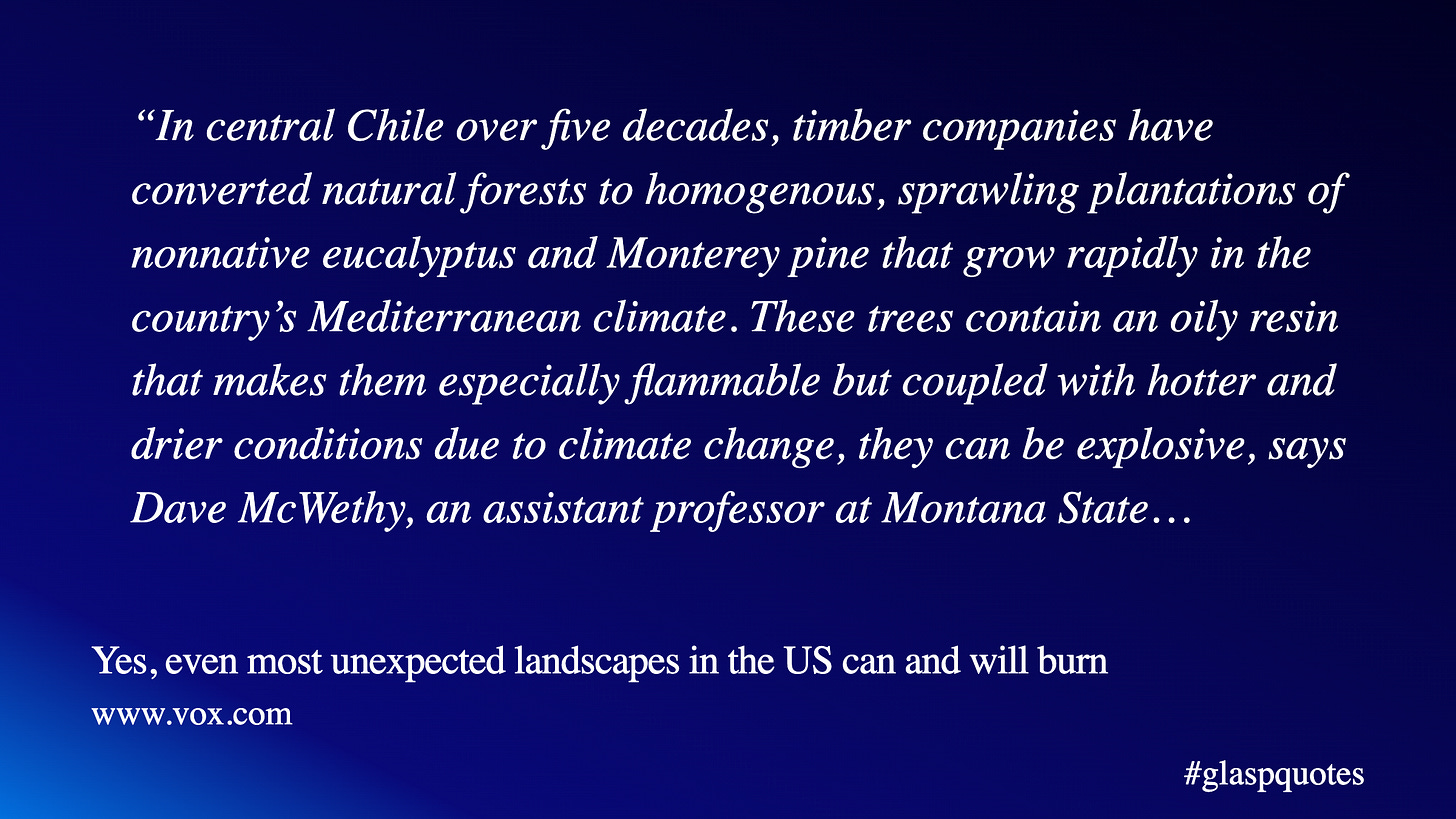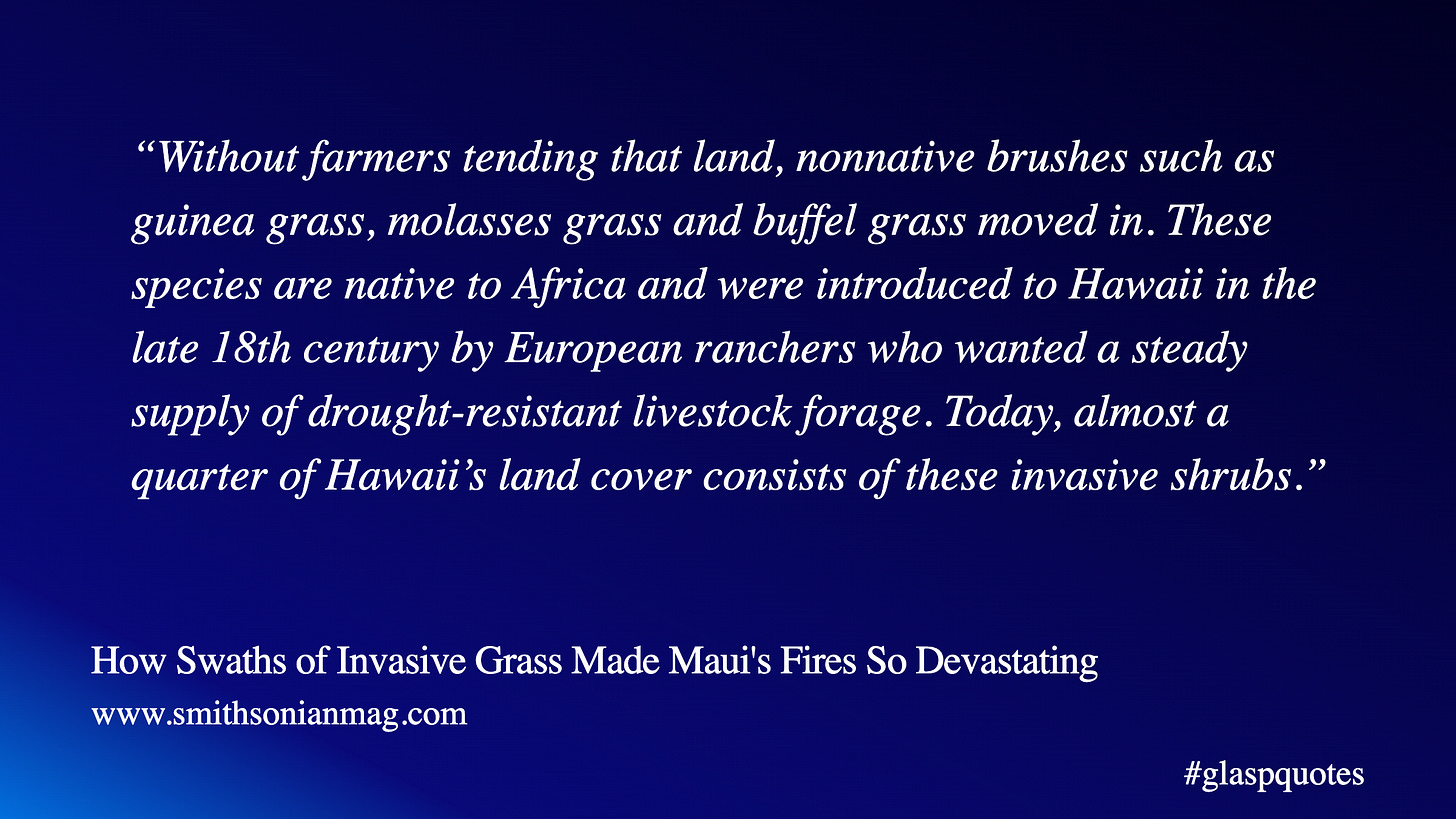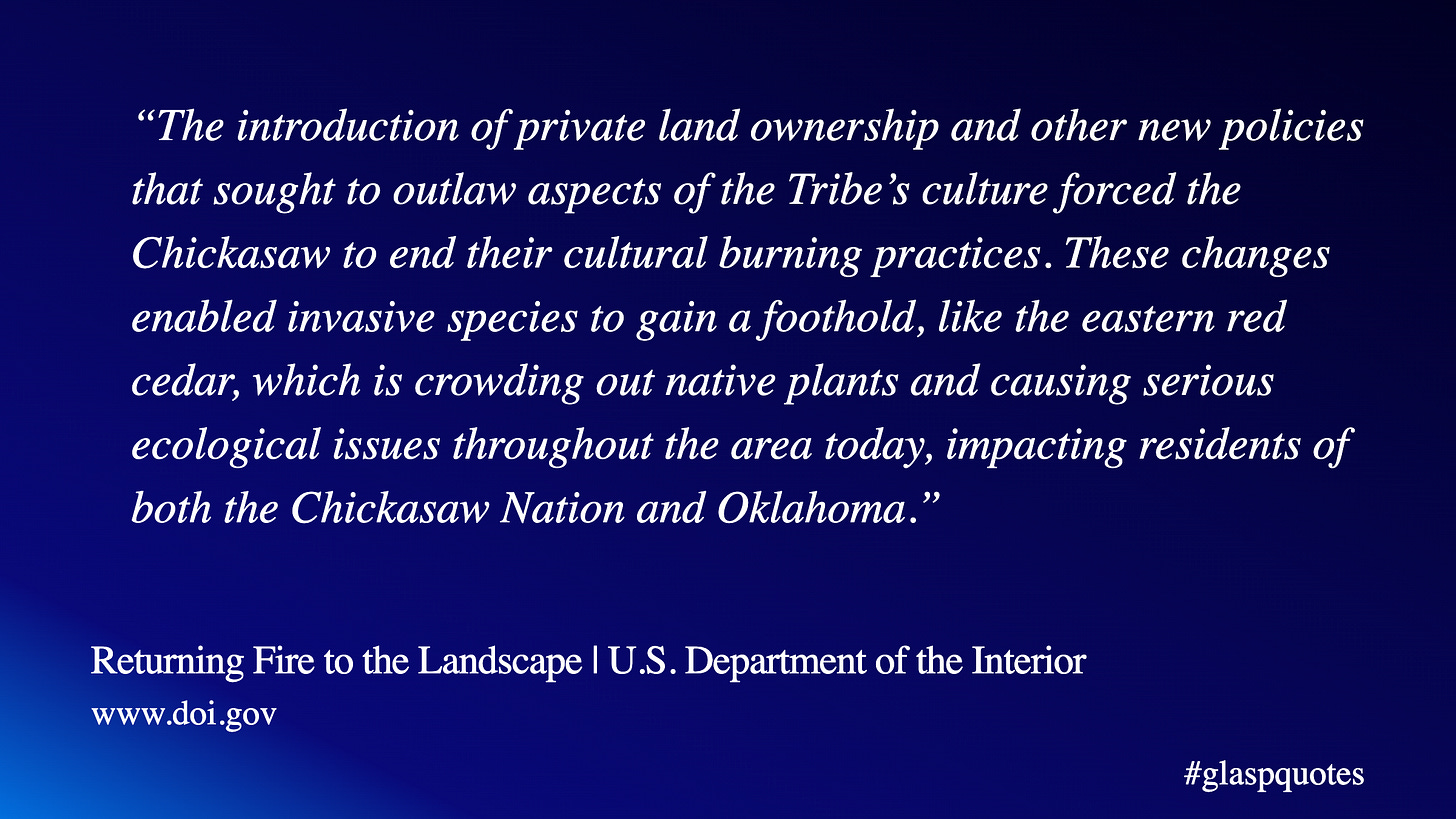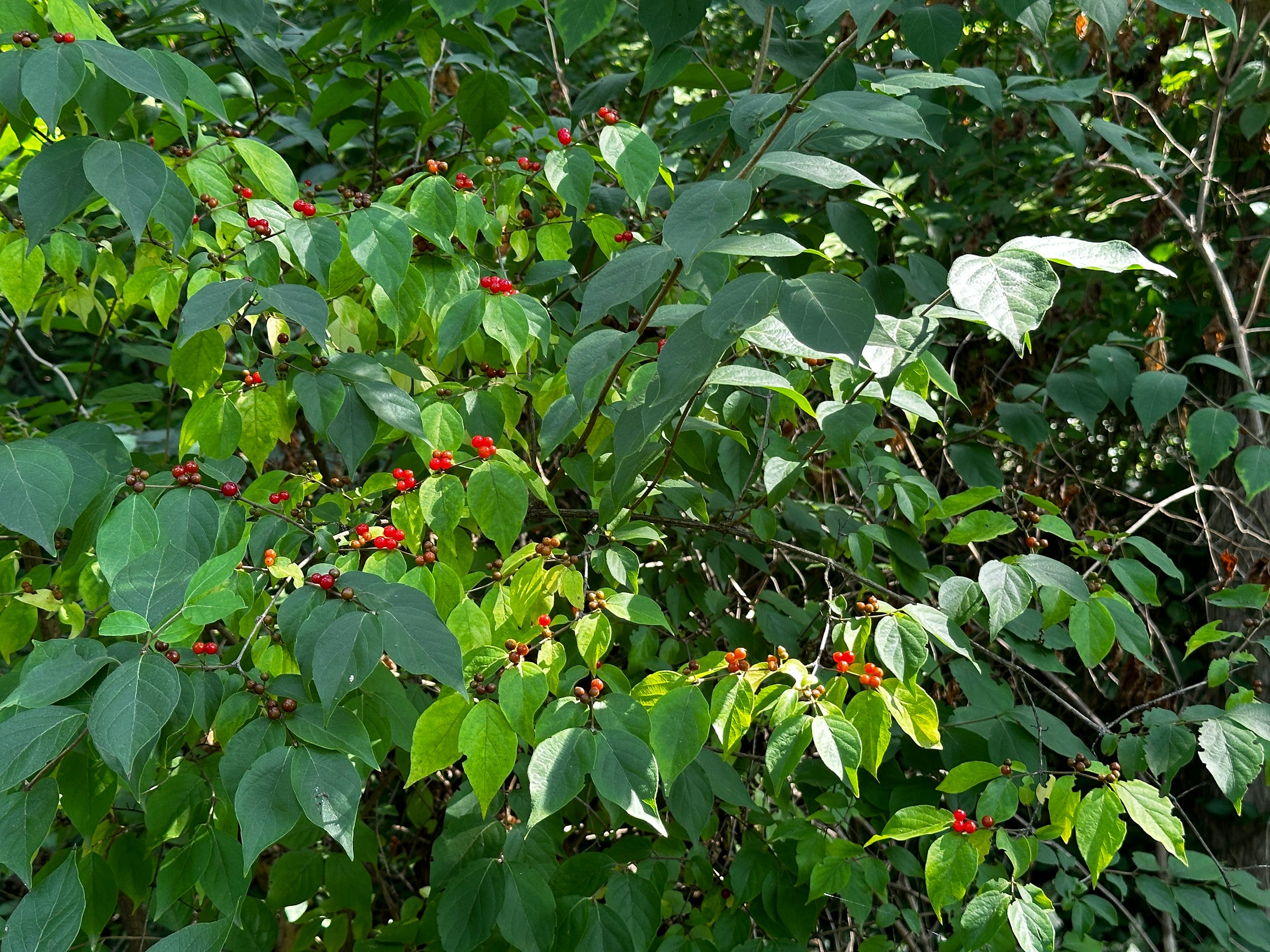
For those of us who only watch helplessly on the evening news from our living rooms, the devastating scenes from southern California are difficult to witness.
This recent firestorm in and near LA is yet another "perfect storm" of just-so conditions--the dry version of the recent torrential floods-of-a-century in western Carolina and Virginia. The worst of the worst natural and man-made conditions join forces against places and people, landscapes and lives.
As bad as the meteorological extremes were in LA, their impact was made even worse by a new source of heat and smoke in wildfires around the world: invasive grasses, shrubs and trees. This is a historical-ecological tale in the making.
As the human population has moved into grassland, chaparral and even moist temperate woodlands, fire suppression has been a knee-jerk response to even the coolest of fires. And so native understory plants accumulate and add both tinder and impediments to fire containment.
Areas disturbed to the subsoil by the razing of land for housing or commercial uses increase the chances that the seeds of non-native plants will outcompete and replace natural landscapes with carpets of combustible invaders. Many grasses are fire-adapted and come back stronger after a wildfire.
And this silent encroachment of alien tinder has been underway for some while, and we see it making climate-complicated wildfires more frequent and more intense. I had no idea.
GRASSES FUEL FIRES AROUND THE WORLD

The grotesque type specimen for this deadly over-growth of flammable flora is the fires last year in Maui, Hawaii. Sugar cane and pineapple plantations there have been abandoned, and the non-natives have moved in. A quarter of the island state’s surface is now covered by invasive grasses.
This is not a problem unique to that island. There have been and will be other fires made worse by an over-abundance of foreign plant life. Fire-friendly grasses have invaded new habitats around the world. Five species are considered among the most problematic grasses, threatening to transform entire ecosystems.
Cheatgrass, Cogon Grass, Gamba grass, Molasses grass and buffelgrass.
…humans have accelerated that process by scattering grass seeds far from their native habitats, sometimes by accident and sometimes intentionally, to feed livestock, control erosion, and decorate gardens. “The [grass] invasions in the last 100 years or so are just a radical example of a speeded-up process that’s been happening over millennia,” says Dave Richardson, an ecologist and invasive plant expert at South Africa’s Stellenbosch University. Science.org
And in other places, it is also trees that burn in today’s hotter and drier climates. This is increasingly the problem with Monterey Pines and non-native eucalyptus.

And in Oklahoma on Chickasaw lands, it is invasive Eastern Red Cedar that brings both an environmental threat and an increased risk of fire—after tribal burning practices were halted:
ONLY YOU CAN PREVENT…
So it is important to be aware of the role that understory invasives play, both in the ecology of landscapes AND the role they might play in future fires near you. There are no SAFE refuges from fire any more than there are from rain, as we learned in the mountain flooding in the Southern Appalachians.
Come spring, I will have more to say about the horror of bush honeysuckle in the forest just out our window and on every trail we have walked since arriving here in September. I have never seen a woodland understory so dominated by a single invasive species.
And yes, they could contribute to future fires’ intensity and also (like eastern Rhododendron) make getting to a fire to contain it nearly impossible. This was a prominent thought during the Tuggles Gap fire in the summer of 2023.







Thanks for this post - and for the link, which I shared on Twitter: https://x.com/krassenstein/status/1877353913755603245
There are a lot of negative comments over there, which baffles me.
My friend Emma from Jamaica (Petchary) shared it on BlueSky:
https://bsky.app/profile/petchary.bsky.social/post/3lfjfee53q22n
Oceans are cooking.
https://www.ecowatch.com/global-ocean-temperatures-record-high-2024.html
Temps are going off the scale.
https://berkeleyearth.org/wp-content/uploads/2025/01/2024-Global-Time-Series.png
Glaciers have been melting for decades; one that disappeared in 2005 in Bolivia was estimated to be 18,000 years old. The highest ski resort in the world closed.
https://www.youtube.com/watch?v=3UOnokIwBR0
https://www.bbc.com/news/world-latin-america-38235094
Ecuador's drought continues on the western side, though the reservoirs on the eastern side that generate electricity are working again.
https://www.nytimes.com/2024/12/30/world/americas/ecuador-hydropower-drought.html
The rainy season on the western side of Ecuador is due to resume soon, though some of the deforested countryside looks like a desiccated apocalypse, our words when helping with an Audubon CBC in mid December. Humans continue to plunder and extract what they can from the earth, and plant the trending commodity. Dragon-fruits are the most recent - not only acres and acres of monoculture, but also the nocturnal illumination looks like small cities through a once-darkened nightscape.
Most who stay closely connected with nature are observing the subtle changes. Sometimes the changes are not so subtle, and when that happens, everyone pays attention. I remain baffled when people blame the government - we humans have done this! How can intelligent people ignore the science? The records? The easy-to-read graphs? But I'm preaching to the choir!
These disasters reflect that science, and there is not an easy fix.
The planet is sick, waving flags of distress, yet many humans still quarrel.
Fire suppression in the Jefferson National Forest has interfered with the growth of young oak trees, which are overshadowed by faster growing maples. The Forest Service is now conducting controlled fires to reduce the undergrowth. Thanks for raising awareness of the problem of non-native species promoting fires in California and Hawaii. It looks like we have better do a better job of controlling them.